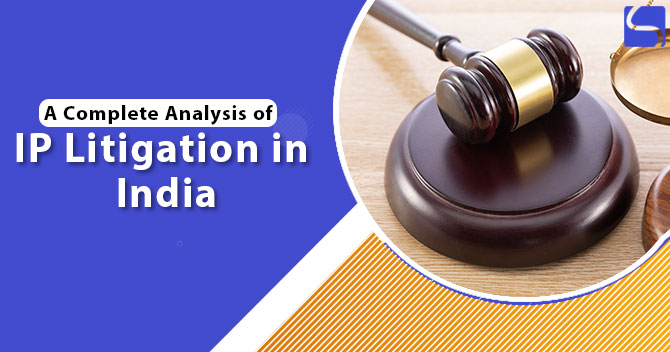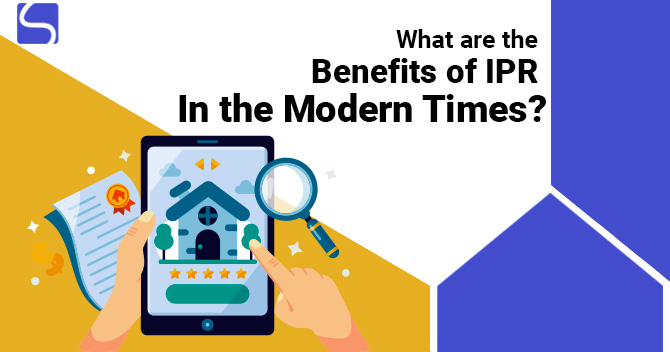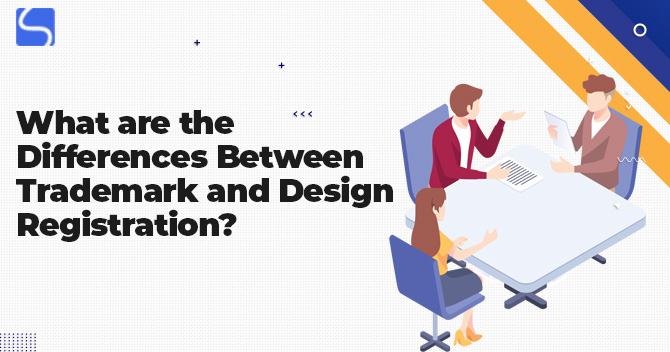A Complete Analysis of IP Litigation in India

Karan Singh | Updated: Sep 30, 2021 | Category: Intellectual Property
Over the last few decades, IP Litigation in India has considerably developed right from the signing of the TRIPS (Trade-Related Aspects of Intellectual Property Rights) Agreement by the Government of India to the current scrapping of the IPAB (Intellectual Property Appellate Broad Tribunal). With the ongoing evolution of IP Litigation in India, the process has become comparatively streamlined and highly effective. Scroll down to check more information regarding IP Litigation in India.
Table of Contents
What is IP Litigation?
IP Litigation enables the protection of intellectual creations or innovations, which comprise creative works produced via the honest efforts of human intelligence. Such creations or innovations can be classified into artistic, literary, dramatic, or musical work and invention & innovative designs.
Importance of IP Litigation in India
IP Litigation in India is fair and suitable that the individual putting in the efforts & skills in an intellectual invention is provided with some advantages as an outcome of their hard work and dedication. For this reason, the legislation in India protects such innovations or inventions and creative works in the method of the Trademarks Act, 1999, the Copyright Act, 1957, the Patent Act, 1970, the Semiconductor Integrated Circuits Layout Designs Act (SICLDA) 2000, and the Designs Act 2000. These acts give an exclusive right to the IP owners concerning their Intellectual Properties (IPs). When Intellectual Property is safeguarded by such laws or Acts, they become intangible assets and act as a method in increasing the valuation of artistic creations, brand names, and inventions.
Meanwhile, over the years, many types of Intellectual Property disputes have also come to light with the arrival of IT (Information & Technology). Such conflicts are evident in the form of Trademark Infringement, Patent Infringement, Copyright Infringement, Design Infringement, Domain Names Disputes, and Passing-off. This makes it essential to know the growth of IP Litigation in India.
Discussing IP Litigation in India and its Development
- Concerning IP disputes, two types of cases can be filed against infringement activities depending on the necessities; Criminal Litigation in Criminal Jurisdiction Courts and Civil Litigation in Civil Jurisdiction Courts.
- Civil actions in Intellectual Property can be divided into two different parts; one is passing-off or common-law action and infringement action. While the former is filed for Patents, Copyrights, Trademarks, and Designs disputes, the latter is a definitive resource only in Trademark actions.
- In civil courts, IP owners can implement their exclusive rights by Trademark Registration, Copyright Registration, Patent Registration, and Design Registration or through common law rights in Copyrights & Trademarks by the excellent value of their prolonged use & invention.
- With the expansion of internet activity & Trademarks registered as domain names, another addition to the sorts of civil action in Intellectual Property Disputes is Domain Name Infringement. Besides civil action, the utmost level domain names like .org, .com, etc., may also be approved under the methods of the UDDRP (Uniform Domain-name Dispute Resolution Process) that was set up to resolve disputes concerning internet domain names registration. Specifically, in India, the .in domain is used, and it is approved under the Indian Domain-name Dispute Resolution Process method.
- Owing to the immense amount of in-progress litigation in Indian courts, the Intellectual Property stakeholders are ongoing to create a difference between cases that may be resolved mutually via alternate dispute resolution methods such as mediation, arbitration & conciliation.
An Overview of IP Dispute in India
- Under the traditional process, the first phase in a civil proceeding usually stays for three to three years. Only after this stage, the written statements, expert evidence, framing of problems, and admission of evidence take place, thus pushing the final hearing further down by five to eight years from the suit filing.
- According to the present trend in India, IP Infringement matters are disposed of within one to two years. This is because, since 2016, IP disputes have been deemed commercial disputes by the integrity of the Commercial Courts Act, 2015. These disputes are heard at High Courts known as commercial benches, which function under a stringent timeline for quick disposal of suits or cases. The High Courts have set out stringent timelines for each stage of the case and the final hearing.
- The hearing of a provisional application in the starting stage of a trial is regarded as a deciding aspect of accomplishing the objectives of an infringement case. The Commercial Courts Act has enabled the courts to give imperative relief to maintain the rights of IP owners. Consequently, commercial courts in Delhi, Mumbai, and Chennai have been vigorously upholding the right of IP owners.
What are the Recent Trends in IP Litigation in India?
- In the past years, IP owners have been bends towards taking civil actions because of the rapid disposal of cases by the commercial benches in High Courts. The courts in such civil infringement suitcases have awarded penalising, compensatory, and ideal damages.
- In the case of civil actions, the spectrum of assistance that may be claimed ranges from ruling orders, search & seizure orders to accounts of costs, damages, and profits. In case of criminal actions, search & seizure orders & damage of violating goods orders are easily attained.
- Disputes regarding a domain name, an injunction avoiding the use of domain name is granted instantly against the similar variants of the banned websites which were used in large numbers, wherein the infringers were generally back with an alternative of a website.
- Hence, to handle the condition, the courts now grant Dynamic Injunctions, in which the IP owner is only required to inform the court of the new variant websites. Further, the previous order avoiding the domain names is instantly applicable on the succeeding variants of the same. This emphasises that India’s current Intellectual Property regime is observing a change in the protection of IPR.
Closing of IPAB
With the closing of the Intellectual Property Appellate Board (IPAB), the pending cases are going to be listed before the commercial benches of different High Courts. This new development or improvement has received mixed reviews from different reputed legal personalities; while some reviewed the closure of the tribunal whereas, others appreciate the move.
In 2003, the tribunal was established under Trademarks Act, 1999[1], and was exercising actual and appellate jurisdiction under the condition of Patents Act 1970, Copyright act, 1957, Geographical Indications of Goods (Registration & Protection) Act, 1999, and Trademarks Act, 1999.
Conclusion
The speedily developing IP Litigation in India makes sure that the rights of IP holders are duly recognised & effectively enforced by courts. Such trends show that the viewpoint is encouraging for IP owners in the times to come. With the closure of the Intellectual Property Appellate Board, it is observed that due to the tribunal absence, an increasing number of parties will choose another dispute resolution process. This new wave of processes will cover the way forward for IP Litigation in India.
Read our article:Examining Technology Transfer Agreement from the Perspective of IPR and Competition Law














